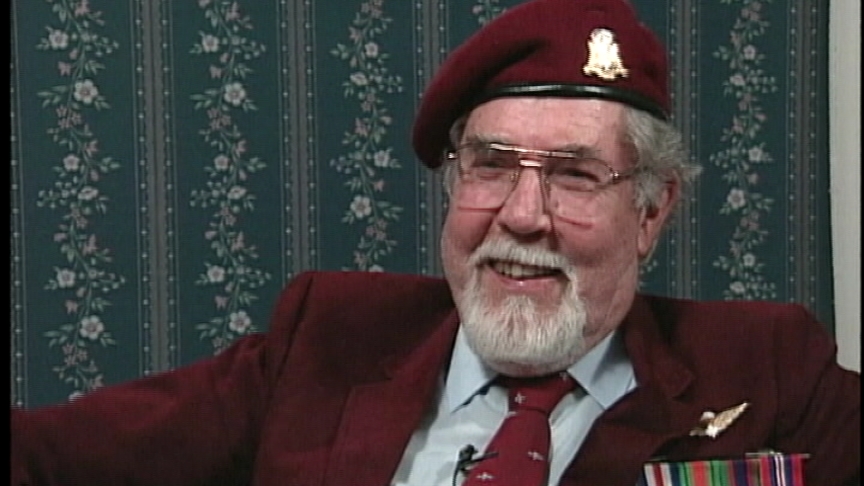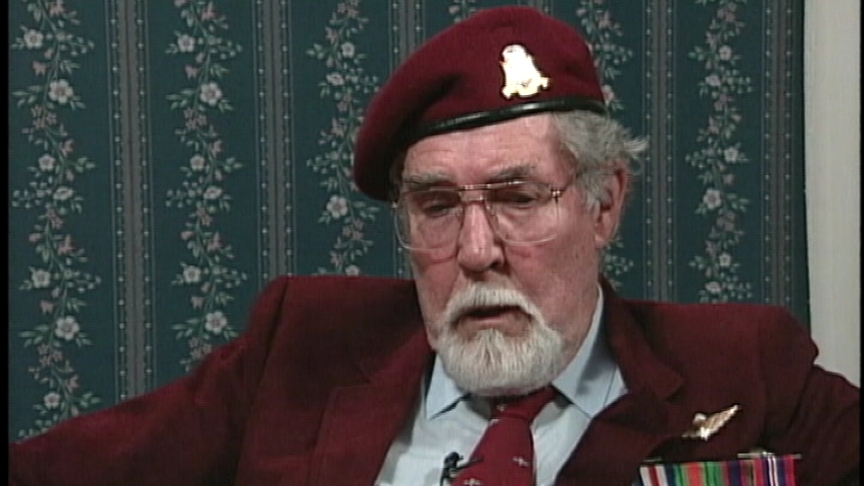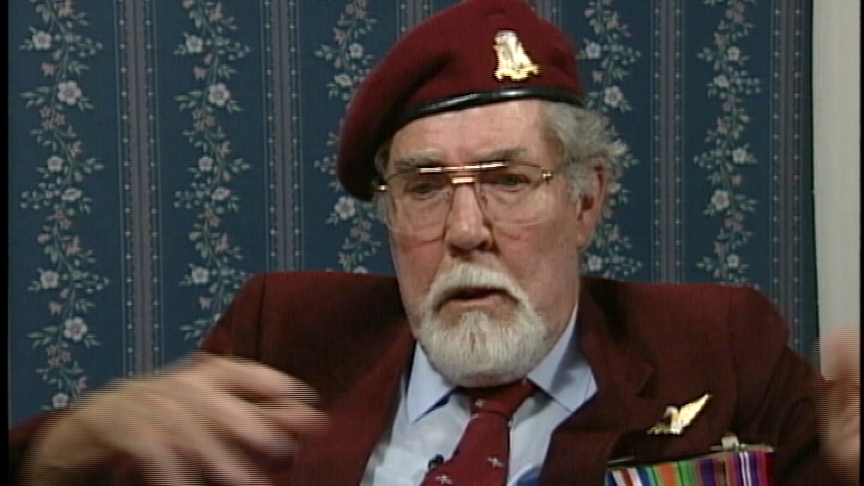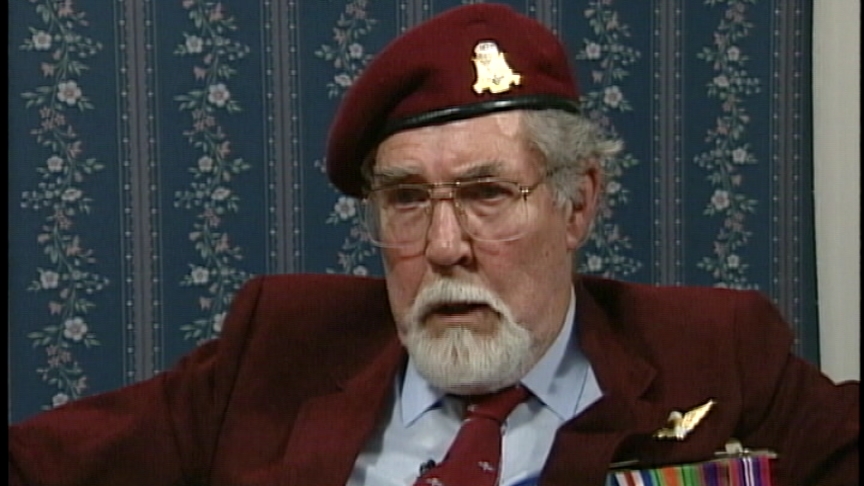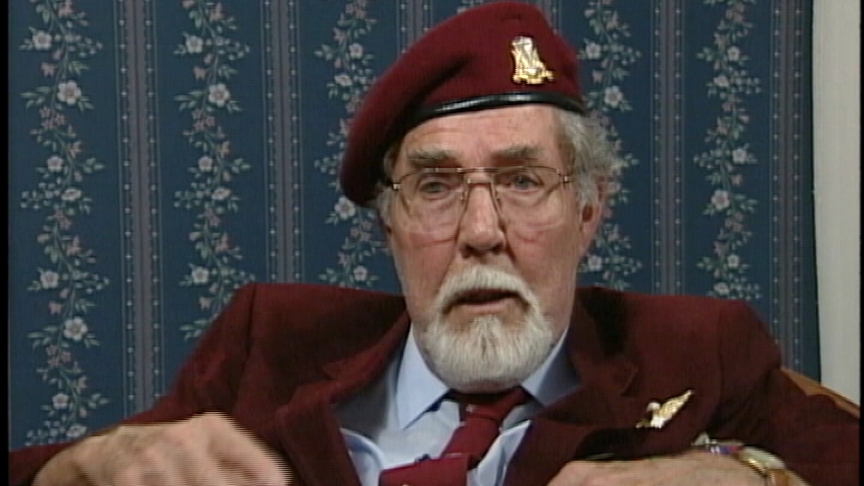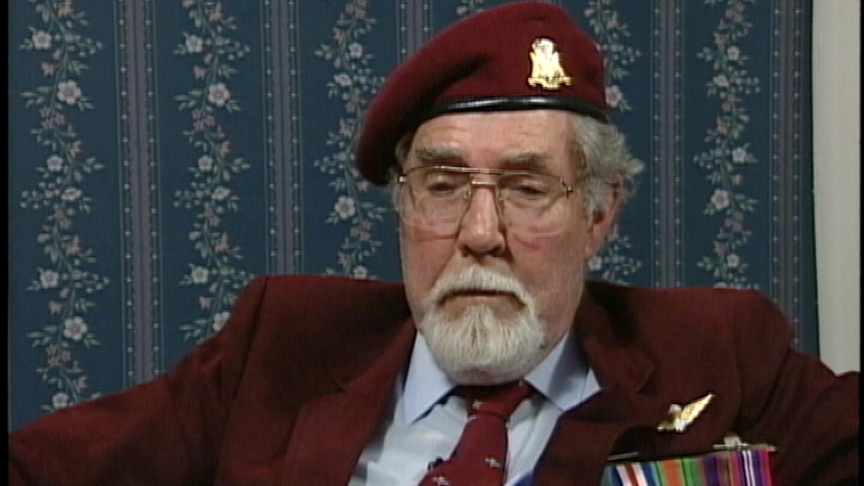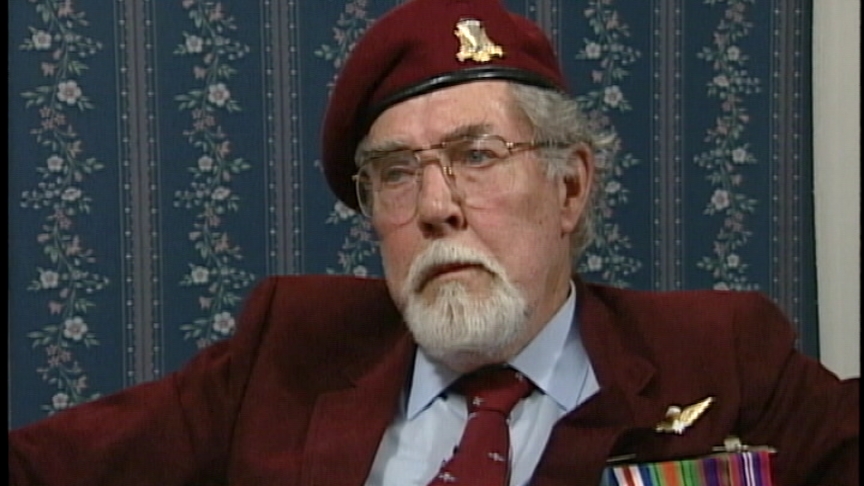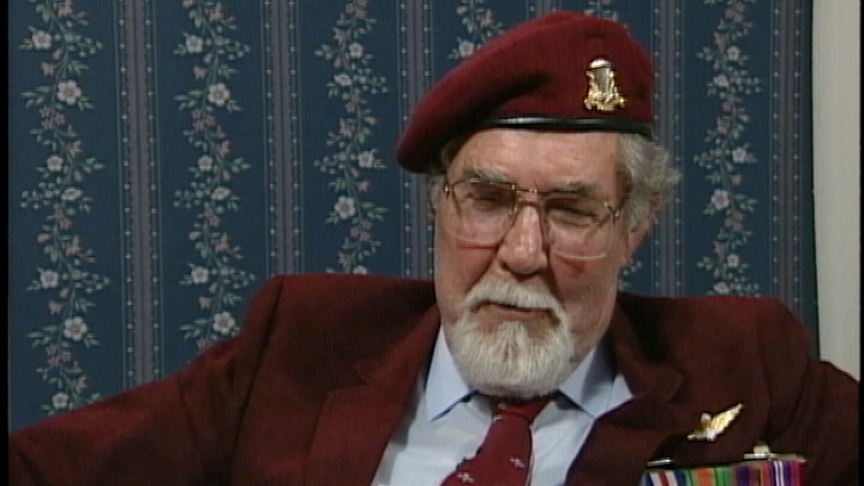The training undertaken was you went in, and it was very, very,
very tough on some of us, or most of us. You started out and you
climbed these 30 foot ropes. And first you had to climb, and
there was a special way of climbing where you put the rope
over the top of your foot and you put the other foot on top
of the rope to hold it, and you drag yourself up and then clamp
your foot on top of your foot and hold, and this sort of thing.
And I can always remember one fellow who... He didn't quite
make it. He'd get about five feet off the floor and he starts
saying, "I can't do it. I can't do it. I can't do it." And they
finally had to let him go because he, he didn't have enough,
he didn't have the strength that was required to... Anyway,
then we did an awful lot of work on the trampoline.
And matter of fact, I was chosen one time, they had the visiting
general, and I was pretty good on the trampoline, so I was the
one chosen to give him a demonstration on the trampoline.
But that was, that was a lot of fun, and so, you did this, and
then you went up to the mock-up tower, which was a tower there
where you, you jumped out, and you had the harness on, and there
was a pulley on this cable, and it was 30 feet above the ground.
And, apparently, they told us that 30 feet is the most
frightening height for a person, you know. And you would have
to simulate a jump. You'd, you'd have to jump out and, of course,
you had to jump a certain way. And the American way, you
always had to count 1000, 2000, 3000 and if your main chute
didn't open by that time, you pulled your reserve, okay.
And that's what you had to do. And then you'd shoot down this,
down this incline to, to, until your feet hit the ground sort of
thing. And then after, I think the third week, third week you
were introduced to the tower, which was 250 some feet. And first
you went up in the tower, and two people, and you were on a seat
and you sat. You're belted in and then after you get up there,
you had to lean forward as far as you could and look down
on the ground, and so on. And then they would pull the, pull
the seat up, and it would hit the block, and the block would
trip it, and you'd come down, you'd drop about 15 or 20 feet
before your seat hit the, your backside hit the, the seat.
So, everyone had to do that. And then after, after that they,
they hooked you up in a, where you were head down about possibly
15 or 20 degrees off the, off the horizontal, head down, and the,
the hook was in about the mid-back, and they'd pull you up to
the top of the tower. And here, again, you'd have to do certain
exercises up there. And then they would say "ready" and then they
would bring it up and it, and it would be a quick release, and
you'd drop and, of course, the risers, the risers, and the...
You'd drop and then you'd bounce, you see, and so on and then
they'd drop you to the ground. And then, then you'd go up and,
and you'd be hooked up to a parachute. And then they, they pull
you up and you'd have to get into a certain position, and they
would pull, pull it up and it would quick release, and you'd
drift off from the tower. And then the fourth week, you'd go into
the plane and start making your jumps. And it was necessary
to qualify. It was necessary to make six jumps.
Five, five jumps during the day and one, one night jump.



